The impact of AML/CFT for business and citizens and the role of the business registries
Solène, it was great to have you at our EBRA Annual Conference in Paris earlier this year. You really brought a fresh perspective to the conversation.
Can you tell us a bit of background about your current role?
I’ve been practicing AML CFT regulation for more than a decade now. It all started when I was in an American law firm, White Case, and I was involved in defending a bank which was subject to a lot of criminal lawsuits from different countries.
To defend the bank, we had to do a huge document review. So, I spent days and days and days reviewing the internal document of the bank – the emails and the chat history – and I realised it was the first time that I’d witnessed how a massive institution was working inside.
I was really interested to understand how such big enterprise was able to manage the criminal risk and how the bank was able to make sure that the local consular was not accepting dirty money.
After this, I went to work in a bank where I was an AML CFT compliance officer. My job was to receive the suspicious transaction report and finalise it. I did that role for a year.
At the same time, France had set up a new commission dedicated to enforcing the AML CFT regulations towards real estate agents, Art dealers and other profession. I was asked to review the first year of decisions making of this commission for Criminal Law Magazine and saw that it was only a sanction decision, and that the real estate agents had no idea that they had to do it and how to do it.
That is why, already having my bar exam, I decided to establish my law firm, Clément Avocats and to dedicate it 100 percent to the AML CFT regulation. That was in 2016.
Since then, I have been practicing AML CFT in various capacities.
I help my clients to build AML CFT compliant programs, I defend them before this commission, I assist professional associations to help them ensure that they’re compliant and that their members are perfectly aware of this regulation.
I also created a digital tool for art dealers to help them implement in a very simple way, AML CFT regulation, Eunomart .
I created the first Association on the subject in France called the Anti Money Laundering Observatory, and we have published books and articles about the subject.
During the Paris EBRA conference, you said that the topic on how AML and CFT can contribute to competitiveness was not talked about often.
Why do you think AML and CFT’s contribution to competitiveness is a topic that should be considered more seriously?
To be honest, I have never asked myself this question before the conference. It was Karla Aman from the Conseil National des Gréffiers des Tribunaux de Commerce who called me and told me about the conference, and I thought it was so interesting.
I’ve never thought about the question in this way and I had a lot of pleasure deliberating on the topic, which led me to really believe that AML CFT can contribute to competitiveness.
So, why should they be considered more seriously? Because they are intrinsically linked together.
AML and CFT regulation has created a revolution within the professional habits of doing business. And it is a revolution that firstly needs to be acknowledged.
And after it’s been acknowledged, it’s important that we talk the business language to help enterprises accept it and embrace it.
“A final idea is to consider that it is more than a commercial revolution. It also can be a little bit of fundamental rights revolution. And that is why I think we should all work deeper on this issue.
I believe that when we’re talking about AML CFT regulations, we’re actually talking about society and how we want to live together in it. And that is why all aspects of it needs to be addressed.”
From what I see today, I would conclude that there isn’t much actual research work on it, at least in France. It’s just not a hot topic, and I would really like it to be.
What I see sometimes is that AML and CFT is a little bit lonely on its own planet. Things are done on a very operational level by individual authorities – and then we collectively ask the question.
I also want to draw attention to the FATF project, which is looking at the Unintending Consequences of the FATF Standards. It’s a great piece of work, but I would urge everybody to think about how we can guarantee that we implement the regulations so that they don’t have unintended consequences. And that is why I think AML CFT should be addressed in a much more general way.
During the conference, you talked about the need to balance an AML strategy that requires openness + transparency, and a Business Strategy that requires profitability.
Do you think it’s possible to have both – AML transparency and business profitability?
Absolutely.
Because when I think about it, what does a business need? A business requires information about its customer and the markets. And what does AML require from business? It requires information about the customer.
So, I really think that they’re both linked and it’s absolutely possible.
I think it’s already the case for those who are paying attention, but yes, I have no doubt that it’s possible.
In what ways can we make AML and CFT requirements more attractive to the whole business ecosystem, including end-customers?
To me, there is one simple way to do that. It is to re-inject meaning into this regulation.
We can do that by telling the business ecosystem and the end customers how their collaboration to the system has helped society and the country to stop money laundering, or stop financing terrorism.
“There is a complete disconnect between what is expected from the business and the customer, and the actual end result.”
I believe communicating the end result would be a great way to increase interest in this regulation.
What are your recommendations for businesses (of all sizes) who are affected by the need to comply with the growing legislation around AML and CFT?
Firstly, I want to tell them that I understand it is complex, I understand they can be frustrated, or they can be afraid, or they are angry. I want to tell them that these are all valid emotions.
Secondly, I want to tell them that they have to change their perspective about it. They have to see how it can help their business grow.
And my final piece of advice is don’t ignore this subject because the consequences in terms of reputation and sanctions are important.
“I want to tell them that AML CFT is here and it’s been here for 30 years now – there won’t be any going back. Businesses need to accept it, and they should embrace it. It will not destroy their business.”
Also, we are at a time that we have a lot of digital tools, which can help a lot of companies to comply with AML CFT regulations. So, being a small business, being a medium sized business, being a huge business – we have today more tools that can be resourceful and help with compliance, including the possible arrival of a regulation into the business to make it easier.
So, I would say, don’t be afraid and let’s go.
The role of Business Registers and more particularly Beneficial Owner Registers is increasing, especially in Europe.
How can EBRA and the Business Register community contribute to making it easier for the business ecosystem to implement and operate an AML/CFT framework?
I have two words that immediately spring to mind: tools and information.
Accurate up-to-date information is critical for every business and every law professional that works with it. So, having great quality access to information is absolutely critical.
The other part is digital tools – the way people can access information. It has to be simple, reliable, accurate, and available on a phone and on the internet, so that every business at any time can access the information they need.
****
Thank you for your time and insight, Solène



